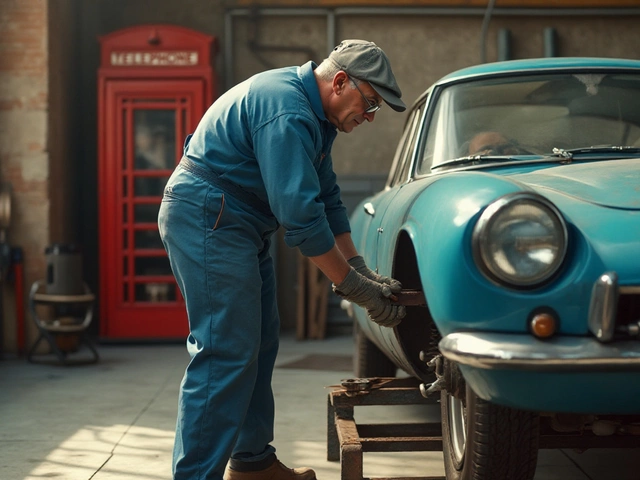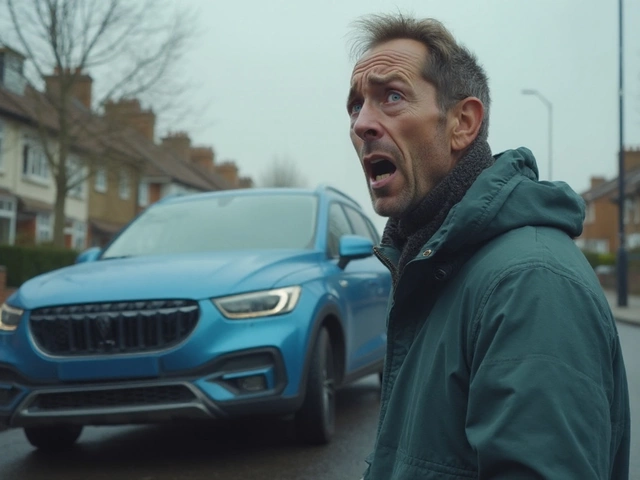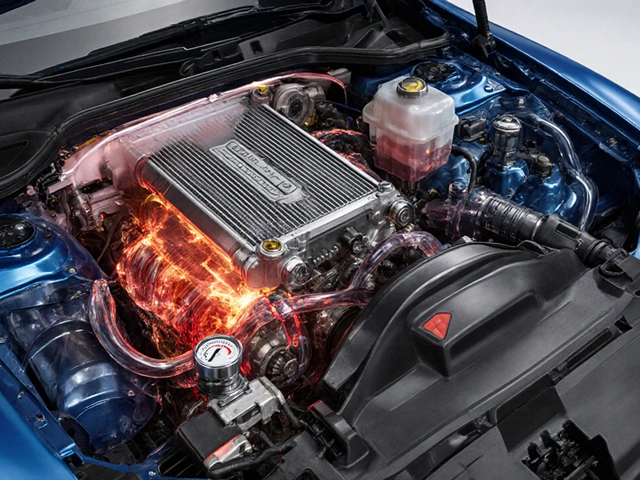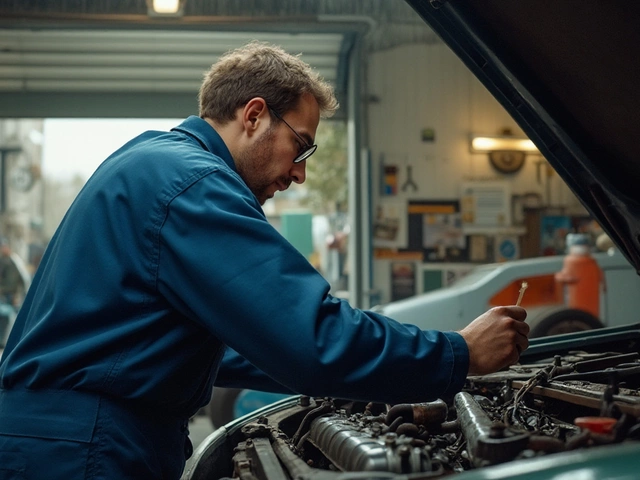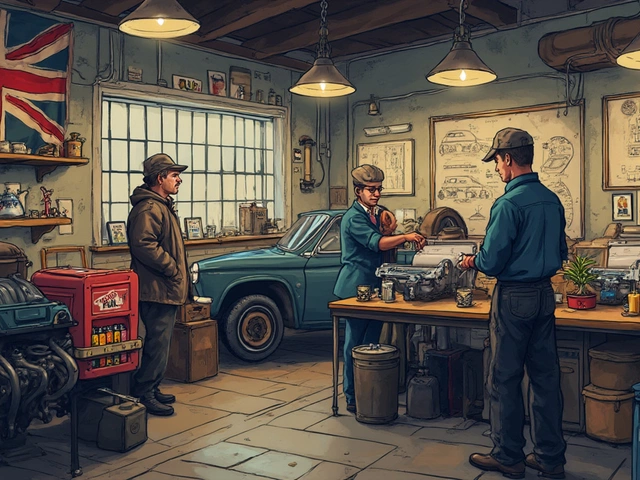Brake Pad Wear Checker
Check Your Brake Pads
Enter your current brake pad thicknesses to determine if replacement is needed and why replacing only one side is unsafe.
Most car owners ask this question at least once: Can you just replace one set of brake pads? It seems logical-why buy four pads when only one side looks worn? You’ve noticed a squeak, maybe a slight vibration, or your mechanic mentioned the left front pad is thin. Replacing just that one pair feels like saving money. But here’s the truth: replacing only one set of brake pads is almost never the right move. And it’s not just about cost-it’s about safety.
Why Brake Pads Wear Unevenly
Brake pads don’t wear out evenly because of poor quality or bad luck. They wear unevenly because of how your car’s braking system works. Each wheel has its own caliper, piston, and hydraulic line. If one caliper sticks, the pad on that side drags, wearing faster. If a brake line has air or a leak, pressure drops unevenly. Dust, road salt, and debris can also cling to one side more than the other, especially if you drive near the coast or in winter conditions.Even without obvious mechanical issues, normal driving habits cause uneven wear. If you tend to brake harder on one side-maybe because of how you park or turn-you’ll wear pads faster on that side. That doesn’t mean you should replace just the worn ones. It means you need to find out why they wore unevenly in the first place.
The Physics of Braking
Your car doesn’t stop by applying force to one wheel. It stops by balancing force across all four. When you press the brake pedal, hydraulic pressure pushes fluid to all four calipers at nearly the same time. If two pads are new and two are worn, the new ones grip harder. The worn ones take longer to engage. That imbalance creates a pulling sensation when you brake. You might feel your car tug to the left or right. That’s not just annoying-it’s dangerous.Imagine driving at 50 mph and needing to stop suddenly. One side grips instantly. The other lags. Your car doesn’t stop straight. It spins. That’s how accidents happen. Studies from the UK’s RAC Foundation show that uneven brake pad wear contributes to 12% of braking-related crashes in wet conditions. That’s not a small risk. It’s a preventable one.
Why Replacing Just One Pair Is a False Economy
You might think replacing only one pair saves you £50 or £70. But here’s what really happens:- New pads on one side grind against old rotors that are already grooved from the worn pads.
- The mismatch causes vibrations, noise, and faster rotor wear.
- You’ll likely need to replace the rotors sooner-often within 5,000 miles.
- That’s £150-£250 extra you didn’t plan for.
On top of that, many garages won’t warranty brake jobs if only one side was replaced. Why? Because they know it’s a setup for failure. You’re not saving money-you’re just delaying the real cost.

What Mechanics Actually Do
Professional mechanics don’t replace brake pads one at a time. They replace them in pairs-front or rear, never just one side. That’s standard practice for a reason. Even if only one pad is below the minimum thickness, the other pad on the same axle is likely close behind. Brake pads usually wear within 10-15% of each other. If the left front is at 2mm, the right front is probably at 3.5mm. That’s not “fine.” That’s a ticking clock.And here’s something most people don’t realize: brake pads are designed to work as matched sets. The friction material, backing plate, and wear indicators are all calibrated to perform together. Mixing brands, models, or even batches can change how your brakes respond. Some pads are softer, some harder. One might grab quicker. The other might need more pressure. That’s not just bad engineering-it’s unpredictable.
When You Might Get Away With It (And Why You Still Shouldn’t)
There’s one rare scenario where replacing just one pad might seem okay: if you’re on a long trip and one pad fails completely while the others are still thick. You grab a single pad to get home. That’s a temporary fix. But even then, you should replace the pair as soon as you can. Don’t drive more than 100 miles like that.Some DIYers try to replace just the worn pad because they think they can “match” it. They buy the same brand, same model, same price. But even identical pads from the same box can vary slightly in composition due to manufacturing batches. You’re still risking imbalance. And if the rotors are worn? You’re setting yourself up for a bigger bill.
What You Should Do Instead
Here’s the simple, safe, and smart way to handle brake pad replacement:- Check all four pads. Use a flashlight and look through the wheel spokes. If any pad is under 3mm, replace the pair on that axle.
- Always replace both front pads together or both rear pads together. Never mix sides.
- Inspect the rotors. If they have deep grooves, scoring, or are thinner than the manufacturer’s minimum thickness, replace them too.
- Use the same brand and model for both pads on the same axle. Stick to OEM or reputable aftermarket brands like Brembo, Textar, or ATE.
- After replacement, bed in the new pads properly. Avoid hard stops for the first 200 miles. Let them heat up gradually.
Replacing both pads on the same axle costs maybe £20-£40 more than replacing just one. But it gives you balanced braking, longer rotor life, no vibrations, and peace of mind. That’s worth every pound.
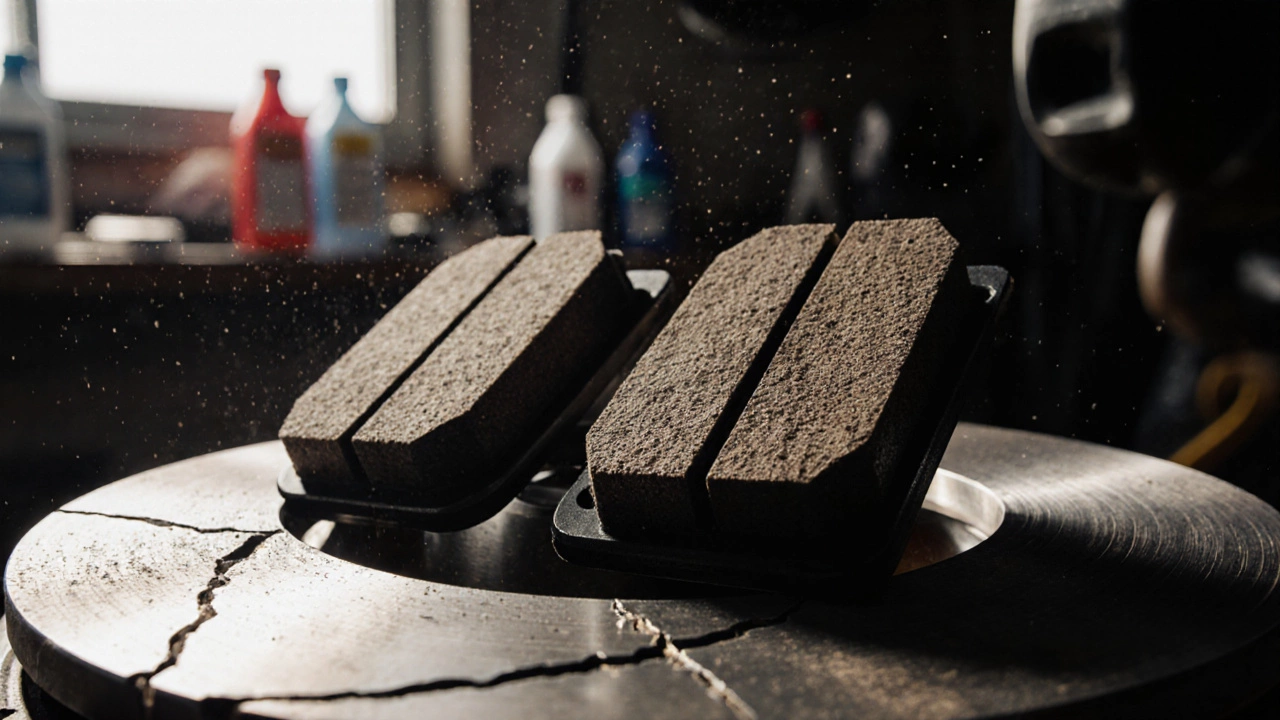
Signs You Need New Brake Pads
You don’t need a mechanic to tell you when your pads are worn. Look for these signs:- A high-pitched squeal when braking (that’s the wear indicator scraping the rotor)
- A grinding noise (metal-on-metal-that means your pads are gone and your rotors are damaged)
- Increased stopping distance
- Vibration or pulsing in the brake pedal
- The brake warning light on your dashboard
If you hear grinding, stop driving. You’re not just replacing pads-you’re replacing rotors, too. And you might have damaged your calipers or brake lines.
How Often Should You Replace Brake Pads?
There’s no fixed number. It depends on your driving style, your car, and where you live. In Bristol, with its hilly roads and frequent rain, brake pads typically last 25,000 to 40,000 miles. If you drive mostly on highways, you might get 50,000 miles. If you commute in stop-and-go traffic, you could need new pads in 15,000 miles.Check them every 10,000 miles or during your annual service. Most modern cars have sensors that trigger a dashboard warning. But don’t wait for that. By the time the light comes on, your pads are already dangerously thin.
Final Thought: Safety Isn’t Optional
Your brakes are the most important safety system on your car. They’re not like replacing an air filter or a wiper blade. A mistake here can kill you or someone else. Replacing just one set of brake pads might seem like a shortcut. But it’s not a cost-saving trick-it’s a gamble with your life.Do it right. Replace both sides. Check the rotors. Use quality parts. And don’t let a £30 savings turn into a £600 repair-or worse.
Can I replace just one brake pad if the other side looks fine?
No. Even if one pad looks fine, it’s likely worn close to the same level as the other. Brake pads should always be replaced in pairs on the same axle to ensure balanced braking and prevent dangerous pulling or vibrations.
What happens if I only replace one brake pad?
You risk uneven braking, which can cause your car to pull to one side when stopping. The new pad will also wear out the old rotor faster, leading to costly rotor replacement. You may also experience noise, vibration, and reduced stopping power-all safety hazards.
Do I need to replace rotors when I replace brake pads?
Not always, but you should inspect them. If the rotors are grooved, scored, or thinner than the manufacturer’s minimum thickness, they must be replaced. If they’re smooth and within spec, you can reuse them with new pads. Many mechanics recommend replacing rotors every second pad change for optimal performance.
Are front and rear brake pads the same?
No. Front brake pads usually wear faster because they handle 70-80% of the braking force. They’re also larger and made of different friction material than rear pads. Never swap them. Always use the correct pads for front or rear.
How do I know if my brake pads are worn out?
Look for a squealing noise, a vibration in the brake pedal, longer stopping distances, or a warning light. Visually, if the pad material is less than 3mm thick, it’s time to replace them. Use a flashlight to check through the wheel spokes.


